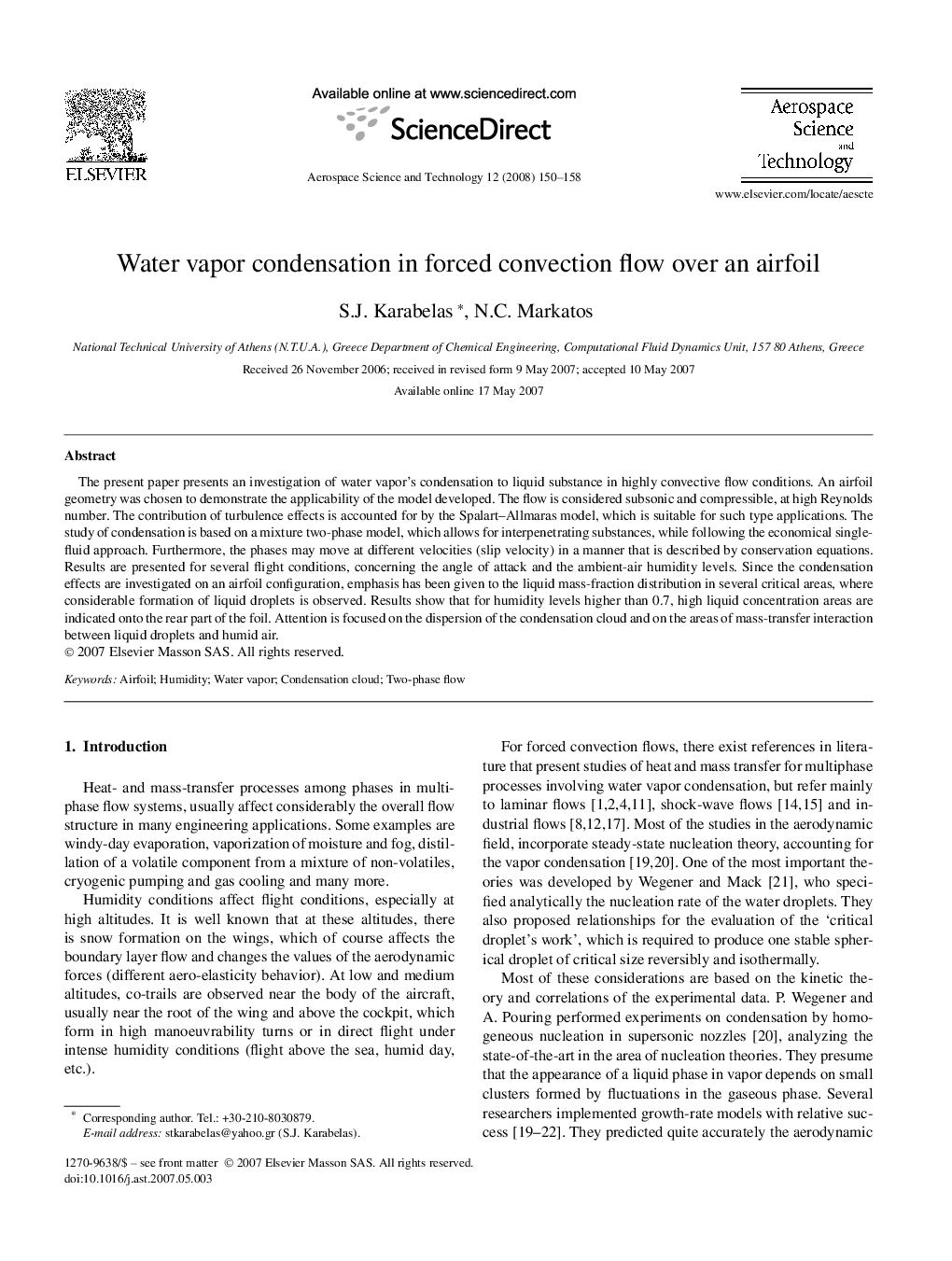| Article ID | Journal | Published Year | Pages | File Type |
|---|---|---|---|---|
| 1718770 | Aerospace Science and Technology | 2008 | 9 Pages |
The present paper presents an investigation of water vapor's condensation to liquid substance in highly convective flow conditions. An airfoil geometry was chosen to demonstrate the applicability of the model developed. The flow is considered subsonic and compressible, at high Reynolds number. The contribution of turbulence effects is accounted for by the Spalart–Allmaras model, which is suitable for such type applications. The study of condensation is based on a mixture two-phase model, which allows for interpenetrating substances, while following the economical single-fluid approach. Furthermore, the phases may move at different velocities (slip velocity) in a manner that is described by conservation equations. Results are presented for several flight conditions, concerning the angle of attack and the ambient-air humidity levels. Since the condensation effects are investigated on an airfoil configuration, emphasis has been given to the liquid mass-fraction distribution in several critical areas, where considerable formation of liquid droplets is observed. Results show that for humidity levels higher than 0.7, high liquid concentration areas are indicated onto the rear part of the foil. Attention is focused on the dispersion of the condensation cloud and on the areas of mass-transfer interaction between liquid droplets and humid air.
